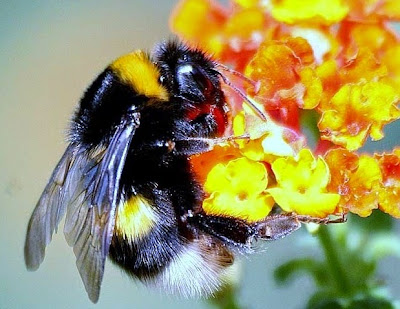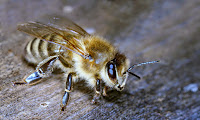About Gorillas
Gorillas are mainly herbivorous apes that dwell in the forests of central Africa. The genus (The scientific way of showing that species are closely related) gorilla is split into two separate species eastern of western which is further split into 4 to 5 subspecies. Their DNA is 95-99% similar to humans and are the closest living realtives after bonobos (
Pan paniscus) and Chimpanzees (
Pan troglodytes).
Gorillas can be found over a varying range of elevations; mountain gorillas (
Gorilla beringei beringei) occupy the cloud forests of the Virunga volcanoes whilst, western lowland gorillas (
Gorilla gorilla gorilla) occupy central west African countries and eastern lowland gorillas (
Gorilla beringei graueri) occupying the Democratic republic of Congo near the boarder to Rwanda.
Males can weigh up to 135-180kg (298-397lb) whilst females weigh between 68-133kg (150-249lb). Adult males grow silver hair along the back and are known as silver backs and is a sign that they are now adult to other gorillas within the group.
They live in groups called troops and generally consist of a single male with females and their offspring but multi male groups have been found. The male is usually above 12 years of age and both males and females often leave their family group in search of unrelated partners.
They live up to 40 years in the wild becoming sexually mature at around 10-12 for females and later at around 11-13 for males. Offspring stay close to their mother up to three years of age after which they start to become more independent between 3 to 6 years of age when they are weaned and sleep separately from their mother.
About Koko
Koko a female western lowland gorilla (
Gorilla gorilla gorilla) was born July 4th 1971 at San Francisco Zoo and was orginally loaned to Dr. Francine Patterson for her doctoral research but has remained with her ever since. Her weight is much higher then what would be expected of a wild female due to a diet consisting of human food products including, processed meat and sweets.
Patterson claims that Kokos use of signs and her actions, indicates her understanding of sign language. Other researchers claim this is no more then operant conditioning or a behavior learned by positive consequences i.e. opening a candy box to receive a tasty treat. Another concern is her ability to show coherent thoughts (logical) via signs and that the interpretation is left to the handler who, may see nonsense as sense. After findings were orginally published in 1978 it was critically argued from video evidence that she was prompted by her handlers unconscious clues (weren't aware she was picking up on gestures they were giving) to show specific signs.
Koko was able to pass the self refection mirror test at 19 which, most other gorillas fail, she also signed for baby the day after her own baby was removed from her, the reason why is not stated. Patterson has also mentioned Kokos ability to create new signs for items she does not have a sign for such as ring, where she will combined the sign for finger and bracelet.
Criticism within the field of science stems from the fact that even though much is published within media outlets, very little of Patterson's findings have been published within the scientific community and substantial data is therefore lacking.
Koko is one of the few non humans known to be provided with a pet, this was the result of her favorite book being the three little kittens and after being provided with a kitten toy she was apparently not impressed. So on her birthday in July 1984 she was allowed to chose a kitten from a litter; she chose a grey male manx and called him all ball and Patterson described how she cared for him like a baby gorilla and that this would aid her in how to nurture offspring. In December of that year all ball escaped the enclosure and was hit and killed by a car and upon telling Koko she was reported to sign bad, sad, bad and frown, cry frown, sad and was also reported to emit a sound similar to human weeping.
In 1985 she was allowed to choose two more kittens, lipstick and Smokey, it is not told of what happened to Lipstick but it is said that Smokey lived with her for 20 years before dying of natural causes.
This year (2015) again she was allowed to pick a kitten for her 44th birthday, again she chose a little grey kitten called Ms. grey whilst another tabby kitten took a liking to her called Ms.black, they are said to be settling in well.
It was mentioned in some media outlets that as the kittens grew older and more independent, they would bite and wriggle to get away from Koko's nurturing ways. This would cause her to punch the wall in frustration and sign obnoxious cat.
My Views
As a budding animal behaviorist, the first thing I was taught in university was to never humanize your study animal therefore, to suggest that an animal is feeling sad, angry or happy in terms of science is wrong as we can not prove that this is the case (the basis for all scientific study) we therefore use alternative terms such as playing, social interaction i.e. grooming, tool use or object manipulation and exploring therefore, to me this would be classed as poor science as we can never truly understand what Koko is truly thinking we can only put a human interpretation on to it not a gorilla interpretation.
I also think it is important to mention that by now most of you will assume that Dr. Patterson is pursuing a career in animal behavior or something similar maybe a primatologist (studies primates i.e. apes, monkeys). In fact she is a psychologist and therefore only has knowledge mainly of the human mind not the behavioral processes and behavior of the animal mind which does differ greatly. Therefore I find it difficult to state that in any way this is beneficial to gorillas, it is not conservation, it is not a behavioral study on how gorillas behave like gorillas which could either help those in the wild or in captivity. It is a study on how human we can make a gorilla as, this is more interesting and therefore generates more media money then normal gorilla behavior does. This is not beneficial to Koko she does not need to learn sign language to thrive as a gorilla, but it is beneficial to the scientist who is making money via exploitation of her.
But they are our closest living relatives I hear you say, surely it would be of worth to see how much human like they can be? Here is where media can be misleading, our ancestors split from the primate line a very long time ago but we are descendants of neanderthals such as
Homo erectus. DNA is a very complex subject which is often difficult to explain but let me try to put it like this, we share 92% of our DNA with mice and 50% with a banana. Are you going to attempt to teach your mouse how to be human or even a banana?
It is true that apes possess the capabilities to use tools and maybe depending on how it is perceived to 'learn' but we are also learning that dolphins and even crows can learn and perform tasks and also what is worth noting that similar behaviors are seen in the wild without the need for human encroachment therefore, when a chimpanzee uses a tool in the wild is it being a human or a chimp? or when a dolphin uses a sponge to prevent being stung by a jellyfish, is it a human or a dolphin?
We define tool use and the ability to learn how to solve tasks as purely human but nature is starting to teach us that it is not, these animals have often learned from their group members, who have either learned for themselves via trial and error or from another not, by human interaction.
The last point I would like to mention is that we have been told that Koko has had her own baby which, was removed from her, why I do not know but, if she can have her own offspring why present her with fragile kittens? I have seen myself that primates at times can be slightly what we may consider rough with their offspring, especially with age and independence and it has been noted that Koko has punched the wall when a kitten has been defiant. What happens when it is no longer the wall? A juvenile gorilla could handle a smack from mother if they push their luck but a young cat? After all nothing is mentioned of what became of Lipstick, was it due to a freak accident that the media was not to know?
So if she can have her own offspring then why not? She loves babies, she clearly would love one of her own but is it not more of a media spectacle to see a gorilla holding kittens then a baby gorilla even though, a baby gorilla is more profitable to the conservation of her species? Again I ask what is the true meaning behind Kokos existence?
What do you think? I have deliberately aimed to try to give you as the reader as much information to make an informative choice as I can and please go ahead and take a look for yourself if you wish to gain further knowledge which can be found
here and feel free to add your comments in the box below.
As always thanks for visiting and reading my blog and until next time keep it wild!!!























































